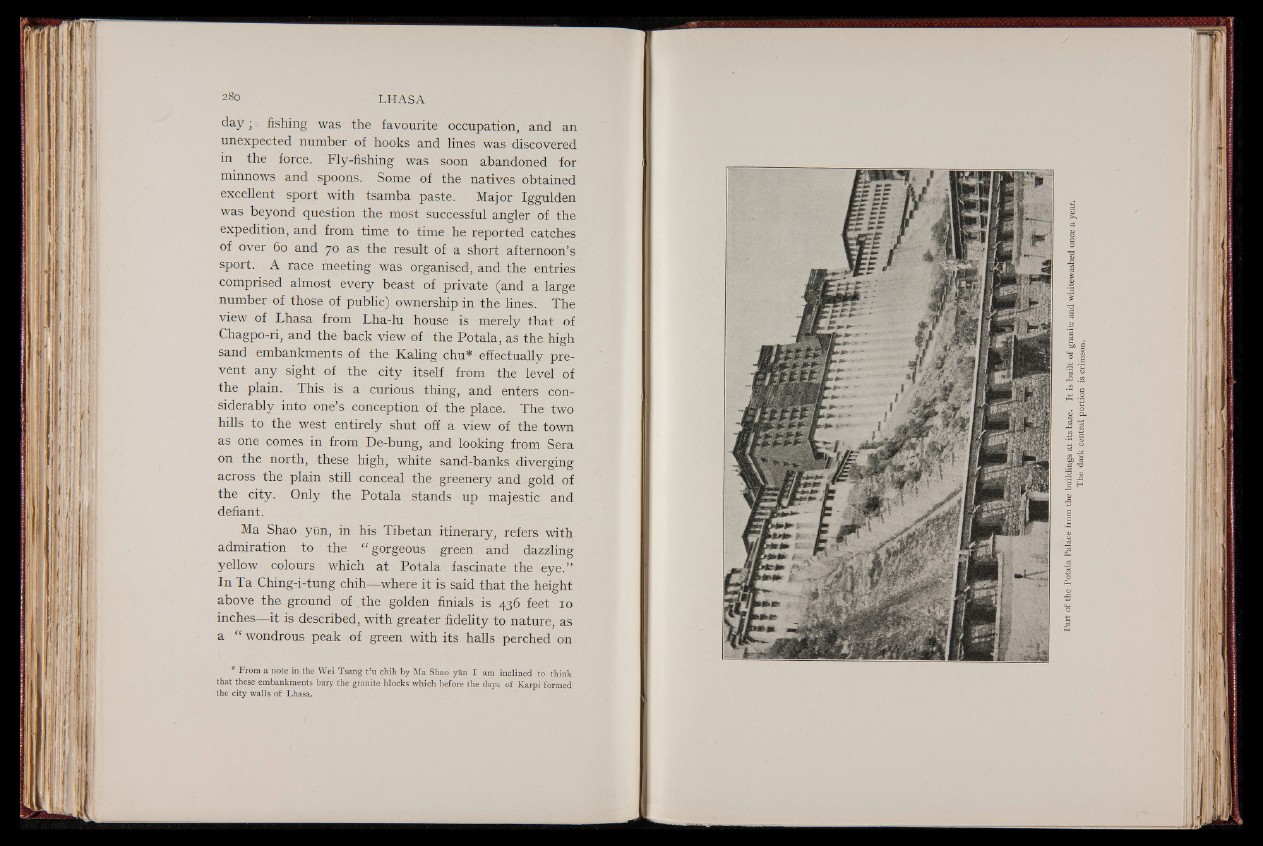
d a y ; fishing was the favourite occupation, and an
unexpected number of hooks and lines was discovered
in the force. Fly-fishing was soon abandoned for
minnows and spoons. Some of the natives obtained
excellent sport with tsamba paste. Major Iggulden
was beyond question the most successful angler of the
expedition, and from time to time he reported catches
of over 60 and 70 as the result of a short afternoon’s
sport. A race meeting was organised, and the entries
comprised almost every beast of private (and a large
number of those of public) ownership in the lines. The
view of Lhasa from Lha-lu house is merely that of
Chagpo-ri, and the back view of the Potala, as the high
sand embankments of the Kaling chu* effectually prevent
any sight of the city itself from the level of
the plain. This is a curious thing, and enters considerably
into one’s conception of the place. The two
hills to the west entirely shut off a view of the town
as one comes in from De-bung, and looking from Sera
on the north, these high, white sand-banks diverging
across the plain still conceal the greenery and gold of
the city. Only the Potala stands up majestic and
defiant.
Ma Shao ytin, in his Tibetan itinerary, refers with
admiration to the “ gorgeous green and dazzling
yellow colours which at Potala fascinate the eye.”
In Ta Ching-i-tung chih— where it is said that the height
above the ground of .the golden finials is 436 feet 10
inches— it is described, with greater fidelity to nature, as
a “ wondrous peak of green with its halls perched on
* From a note in the Wei Tsang t’u chih by Ma Shao yiin I am inclined to think
that these embankments bury the granite blocks which before the days of Karpi formed
the city walls of Lhasa.